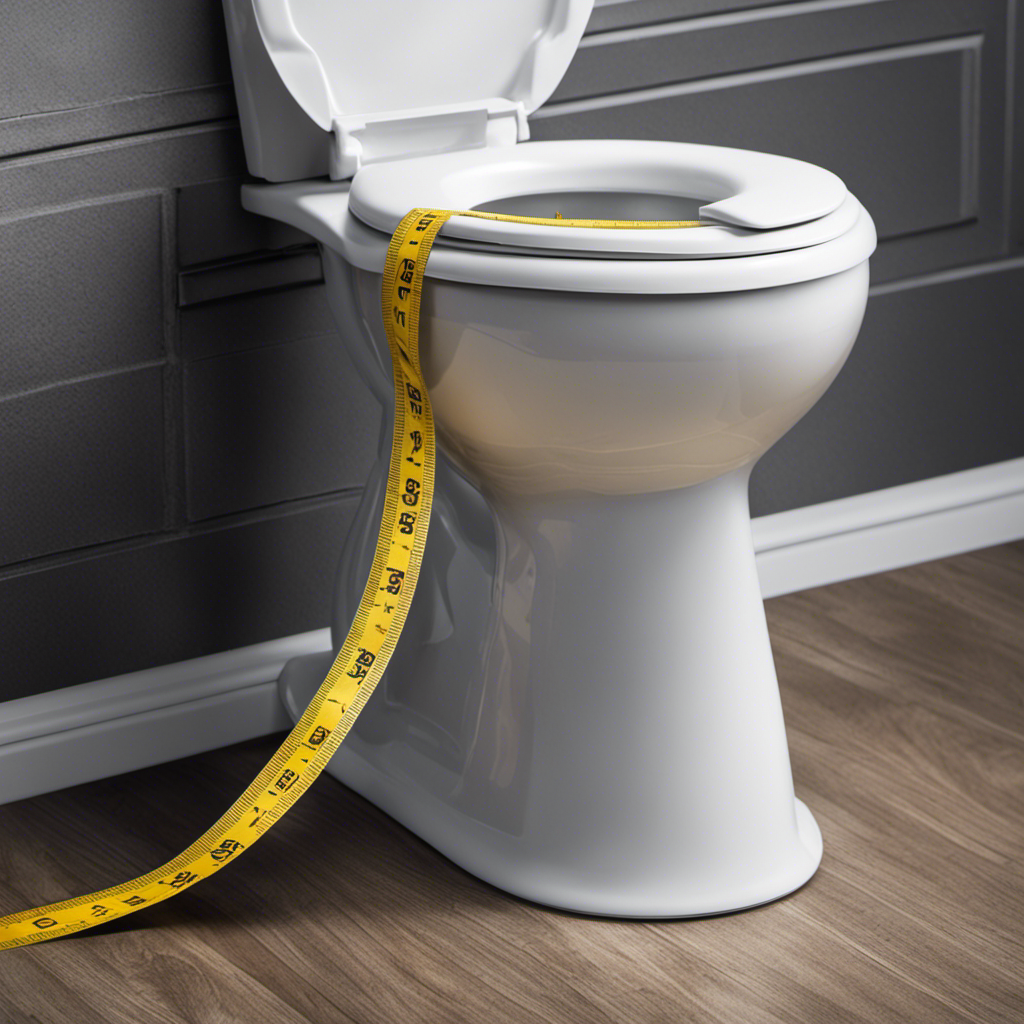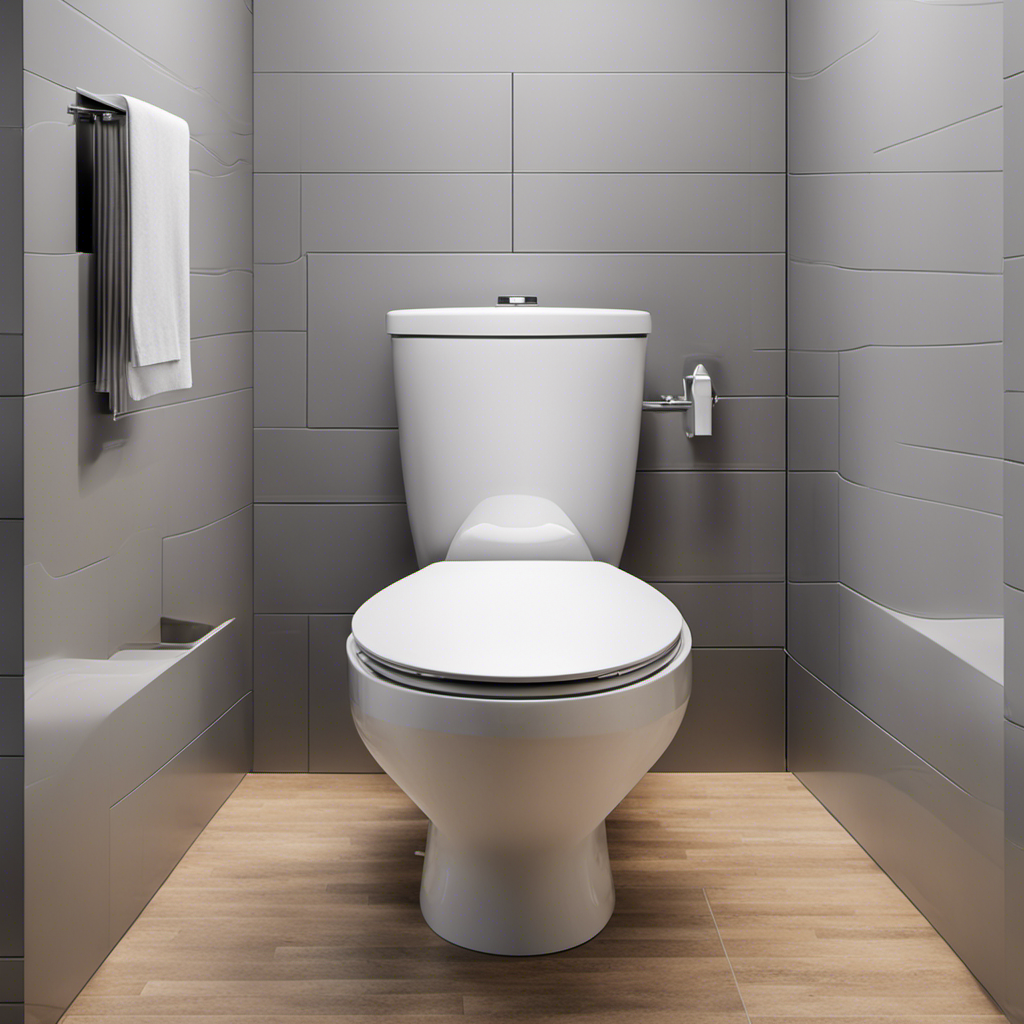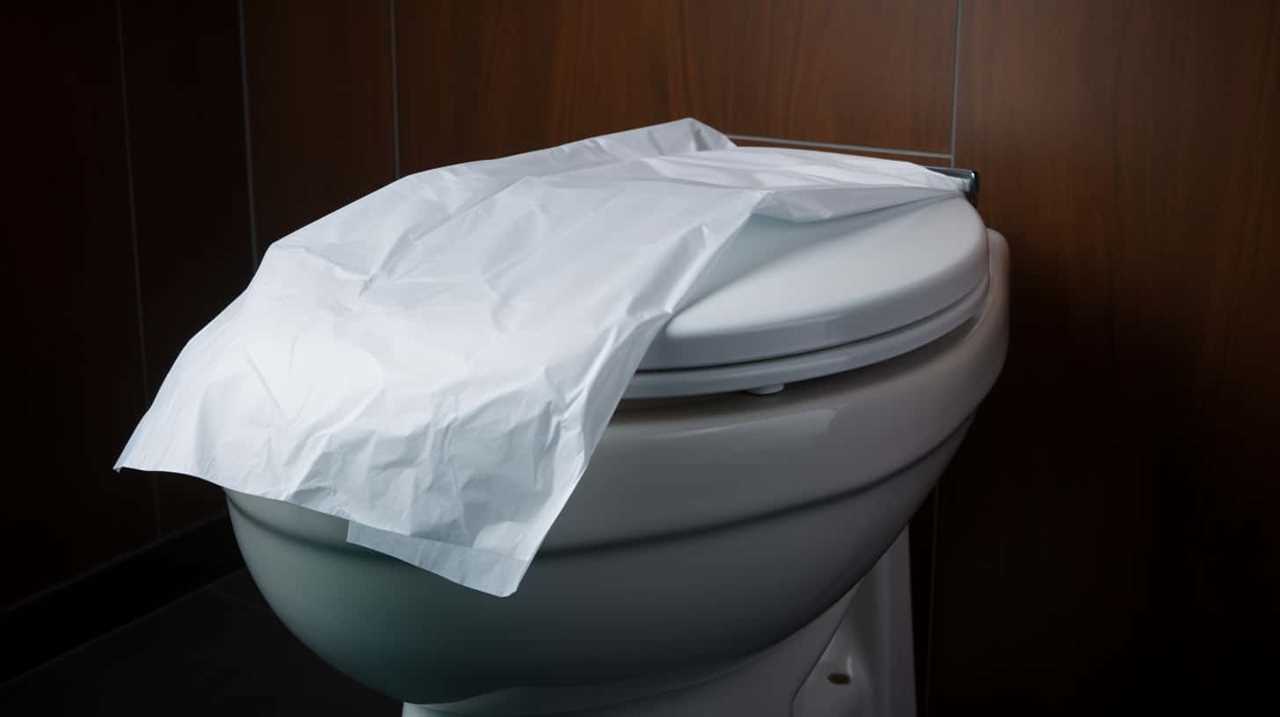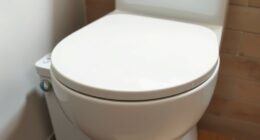Have you ever wondered what the rough-in size for a toilet is?
Well, I’m here to shed some light on this important aspect of bathroom design. Understanding the rough-in measurements is crucial when installing or replacing a toilet.
In this article, we will explore the common rough-in sizes, how to measure them accurately, and the consequences of getting it wrong.
So, if you want to ensure a seamless toilet installation, keep reading to discover all you need to know about rough-in sizes.
Key Takeaways
- Rough-in sizes for toilets typically range from 10 to 14 inches, with 12 inches being the standard size for most residential toilets.
- Proper rough-in measurement is crucial for a well-designed bathroom and ensures the toilet fits properly and aligns with the plumbing system.
- Incorrect rough-in size can lead to issues like improper alignment, leaks, and damage to the toilet or flooring.
- Adjustments can be made using offset flanges or adjustable flanges to accommodate different toilet types and their corresponding rough-in sizes.
Common Rough-In Sizes for Toilets
Common rough-in sizes for toilets typically range from 10 to 14 inches. The rough-in measurement refers to the distance between the wall and the center of the toilet’s drainpipe. It is an essential factor to consider when installing or replacing a toilet.
The most common toilet rough-in sizes are 10, 12, and 14 inches. The 10-inch rough-in is less common and often found in older homes. The 12-inch rough-in is the standard size for most residential toilets. The 14-inch rough-in is typically used for larger or ADA-compliant toilets.
Understanding rough-in measurements is crucial because it ensures that the toilet fits properly and aligns with the plumbing system. Now, let’s delve into a deeper understanding of rough-in measurements.
Understanding Rough-In Measurements
When it comes to installing a toilet, understanding the importance of rough-in measurements is crucial. The rough-in measurement refers to the distance between the wall and the center of the toilet’s waste outlet.
Standard rough-in sizes typically range from 10 to 14 inches, although other sizes may be available. It’s important to adjust for different toilets to ensure proper alignment and functionality.
Importance of Rough-In
To ensure proper installation, measure the rough-in distance from the wall to the center of the toilet flange.
The importance of proper installation cannot be overstated, as it directly impacts the functionality and aesthetics of your bathroom. The rough-in size determines the positioning of the toilet and affects the overall bathroom design.
If the rough-in size is incorrect, it can lead to issues such as improper alignment, leaks, and even damage to the toilet or surrounding flooring. Additionally, an incorrect rough-in size can limit your options when it comes to choosing a toilet, as not all toilets are compatible with every rough-in size.
Therefore, it is crucial to accurately measure the rough-in distance before purchasing and installing a toilet. This will ensure a hassle-free installation and a well-designed bathroom.
In the next section, we will discuss the standard rough-in sizes and their significance in toilet installations.
Standard Rough-In Sizes
The standard rough-in sizes determine the distance between the wall and the center of the toilet flange, which is essential for proper installation. These sizes are standardized to ensure compatibility with most toilets. However, it is important to note that not all toilets have the same rough-in size. Therefore, it is necessary to adjust the rough-in size for different toilets. This can be done by using offset flanges or adjustable flanges. An offset flange allows you to move the toilet further from the wall or closer to it, depending on your needs. An adjustable flange, on the other hand, allows you to adjust the rough-in size within a certain range. By making these adjustments, you can ensure that your toilet fits perfectly and functions properly.
| Toilet Type | Rough-In Size |
|---|---|
| Standard | 12 inches |
| Compact | 10 inches |
| Elongated | 14 inches |
Adjusting for Different Toilets
It’s important to note that not all toilets have the same rough-in size, so adjustments may be necessary for different models. When installing a toilet with a different rough-in size, there are a few steps to follow to ensure a proper fit:
-
Measure the rough-in size: Use a tape measure to determine the distance between the wall and the center of the sewer pipe. This measurement will determine the rough-in size.
-
Purchase the correct toilet: Look for a toilet that matches the rough-in measurement you obtained. Most toilets have a rough-in size of either 10, 12, or 14 inches.
-
Make adjustments if needed: If the rough-in size of the toilet you purchased doesn’t match the measurement you took, you may need to make adjustments. This can involve moving the flange or using offset flanges or adjustable toilet carriers.
-
Seek professional help if necessary: If you’re unsure about adjusting the rough-in size or encounter any difficulties, it’s best to consult a professional plumber for assistance.
Following these steps will help ensure a successful toilet rough-in installation, even when dealing with different rough-in sizes.
Factors to Consider When Determining Rough-In Size
When determining rough-in size for a toilet, you should consider factors such as available space and plumbing requirements. The rough-in size refers to the distance between the wall and the center of the toilet flange. This measurement is crucial for proper installation and ensures that the toilet aligns with the drain pipe. The standard rough-in size is 12 inches, but there are other options available, such as 10 inches or 14 inches, to accommodate different plumbing setups. Factors to consider when deciding on the rough-in size include the layout of the bathroom, the location of the sewer line, and any existing plumbing fixtures. By taking these factors into account, you can select the appropriate rough-in size and ensure a smooth installation process.
| Rough-in Size (inches) | Adjusting Options |
|---|---|
| 10 | Limited space, off-center drain |
| 12 | Standard size, most common |
| 14 | Extra clearance, larger bathroom |
How to Measure Rough-In Size for a Toilet
To measure the rough-in size for your toilet, start by locating the center of the toilet flange and measuring the distance from the wall. This measurement is crucial in determining the correct rough-in size for your toilet installation.
Here are the steps to measure the rough-in size accurately:
- Locate the center of the toilet flange.
- Measure the distance from the wall to the center of the flange.
- Ensure that the measurement is precise and accurate.
- Use this measurement to determine the rough-in size for your toilet.
Consequences of Incorrect Rough-In Size
Using the wrong rough-in size for your toilet installation can lead to costly and time-consuming consequences.
One of the main consequences of improper rough-in size is leakage. If the rough-in size is too small, the toilet may not fit properly, causing gaps between the toilet and the floor. This can result in water leakage every time the toilet is flushed, leading to water damage and expensive repairs.
On the other hand, if the rough-in size is too large, the toilet may not be stable and secure, causing it to wobble or shift. This can also lead to leakage and potential damage to the surrounding flooring.
Troubleshooting rough-in size errors should be done carefully to avoid these consequences. It is essential to measure and double-check the rough-in size before purchasing and installing a toilet, ensuring a proper fit and preventing any future issues.
Adjusting Rough-In Size: Options and Limitations
When it comes to adjusting the rough-in size for a toilet, there are several plumbing considerations to keep in mind. Making mistakes in rough-in measurements can lead to costly and time-consuming issues down the line. Here are some common mistakes to avoid:
- Incorrectly measuring the rough-in distance, resulting in a toilet that doesn’t fit properly against the wall.
- Failing to account for the thickness of the finished wall, causing the toilet to stick out too far or not sit flush.
- Neglecting to consider the clearance requirements for water supply lines and waste pipes, leading to cramped or obstructed spaces.
- Forgetting to adjust the rough-in size for a different toilet model, resulting in misalignment and potential leaks.
To avoid these problems, it’s crucial to carefully measure and adjust the rough-in size, taking into account all the necessary plumbing considerations.
Tips for Choosing the Right Rough-In Size for Your Toilet
Make sure you carefully consider the measurements and plumbing requirements before selecting the right rough-in option for your bathroom.
When choosing a toilet brand, it is essential to understand the rough-in size, which refers to the distance between the wall and the center of the toilet drain. This measurement determines the toilet’s position and compatibility with your plumbing system. Troubleshooting toilet installation issues can often be avoided by selecting the correct rough-in size.
To determine the rough-in size, measure from the wall to the center of the existing toilet flange. Common rough-in sizes include 10 inches, 12 inches, and 14 inches. Ensure that the toilet you choose matches the existing rough-in size or, if necessary, make the required adjustments during installation.
Conclusion
In conclusion, determining the correct rough-in size for your toilet is crucial to ensure a proper fit and functionality. It’s like finding the perfect puzzle piece that seamlessly fits into the bigger picture of your bathroom.
By understanding the measurements, considering factors such as plumbing and space limitations, and accurately measuring the rough-in size, you can avoid the unfortunate consequences of an incorrect fit.
Remember, there are options available for adjusting the rough-in size, but it’s always best to choose the right size from the start. So, take your time and choose wisely for a toilet that fits like a glove.










